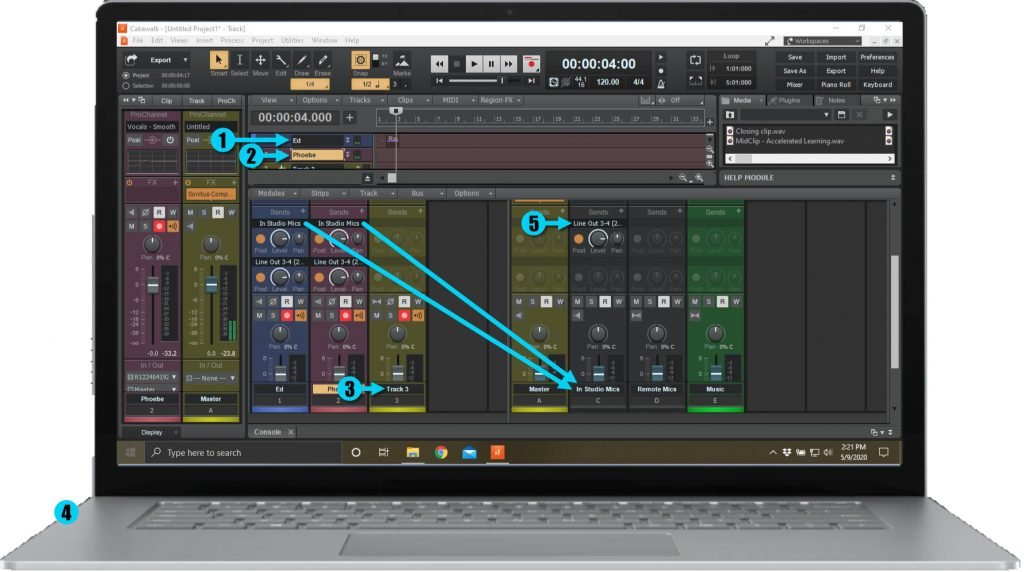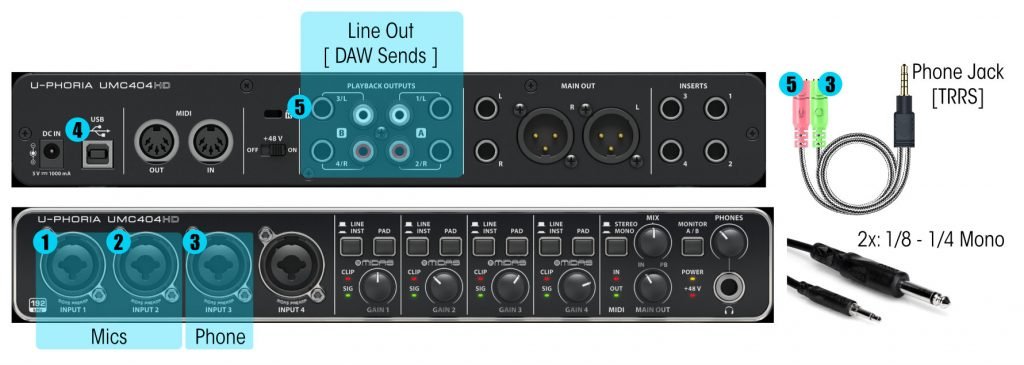When we first started Swinger University Podcast we read a bunch of books, websites, blog posts, Reddit groups, you get it, we research stuff.
After a ton of research I decided to go with a “simpler” audio input than a mixer (didn’t need all the EQ and inputs, or so I thought). We decided on the Behringer U-Phoria UMC404HD for a few reasons:
Pros
- Excellent sound quality
- Multi Track support
- 4 Microphone inputs
- Phantom Power (we use Condenser mics)
- Easily transportable
- Relatively inexpensive
Cons
- Meh documentation (Foreshadowing…)
It was easy to setup using the quick start guide, and we started recording episodes. We were getting a lot of feedback that we sounded great. All was well…
Then we had the realization that we might want to record phone or Zoom interviews. More research. Every single article pointed to something called a mix-minus… using a mixer. Now I was thinking that UMC404HD was a terrible mistake. Hours of research later and I was convinced that I needed to scrap the UMC404HD. Remember the con above, the Behringer documentation didn’t really help. Here is what was in the “Manual”: “PLAYBACK OUTPUTS A 1/L & 2/R / B 3/L & 4/R (UMC404HD)connect to external speakers for additional monitoring options.”
Here is what a mix minus is. All in studio audio (mics, sounds effects, remote caller – the Mix) is sent to the phone minus the callers audio. The minus is more of an “everything-but” – everything in the mix, but not the caller’s track. Most articles refer to the mixer’s FX track to send all the tracks to the remote caller minus the callers audio. Here is a great article on a traditional Mix-minus setup.
I kept putting off the mixer purchase because we didn’t need it yet, and I didn’t want to spend the money. I continued trolling the internet for a miracle, and studying the lingo used by the audio engineering community and I learned some key terms. The most important two were: Sends, and Signal Path (Many thanks to my good friend and musician – M.M.). This new vocabulary boosted my Google search and then it happened… A miracle!
MickNelso to the rescue! MickNelso had written up an article on Signal Path Diagram for behringer UMC404HD. This fantastic article opened the door to the answer to my problem!
For anyone recording podcasts, and needing to set up a mix-minus with the U-Phoria UMC404HD, here is your answer! The table below details our recording setup.
| Diagram | Input/output | DAW | UMC404HD (manual Ref) |
|---|---|---|---|
| 1 | Microphone 1 | Track 1 – In (Behringer Left Line In 1-2) | Input 1 (1) |
| 2 | Microphone 2 (optional) | Track 2 – In (Behringer Right Line In 1-2) | Input 2 (1) |
| 3 | Phone Splitter (Headphones) | Track 3 – In (Behringer Right Line In 3-4) | Input 3 (1) |
| 5 | Phone Splitter (Microphone) | Send (In Studio Mics) – Out (Line Out 1-2) | Playback Outputs 1/L |


I hope this can help other podcasters.









